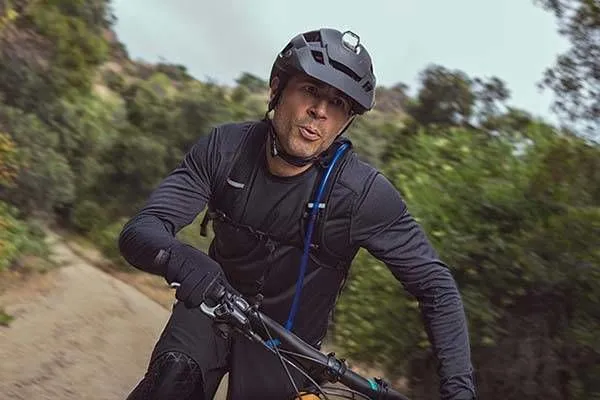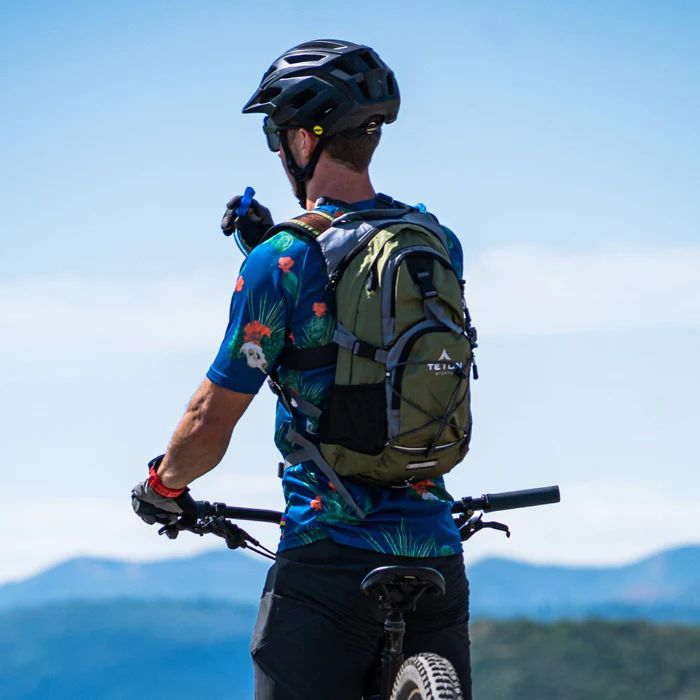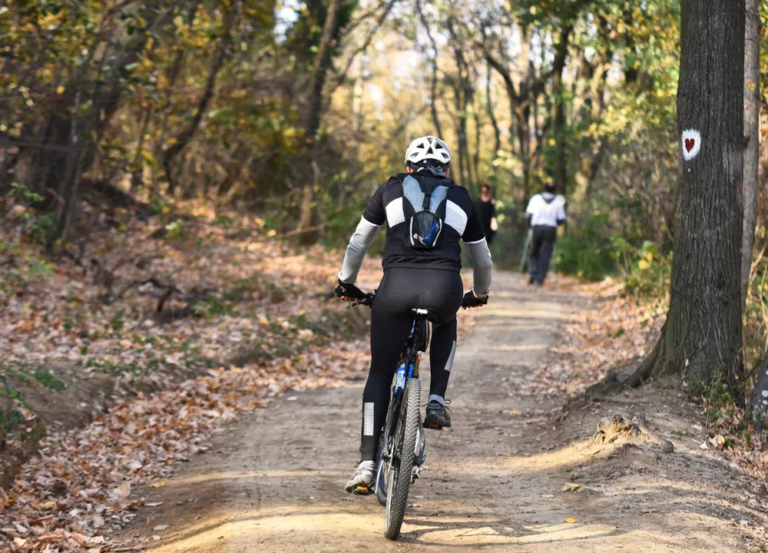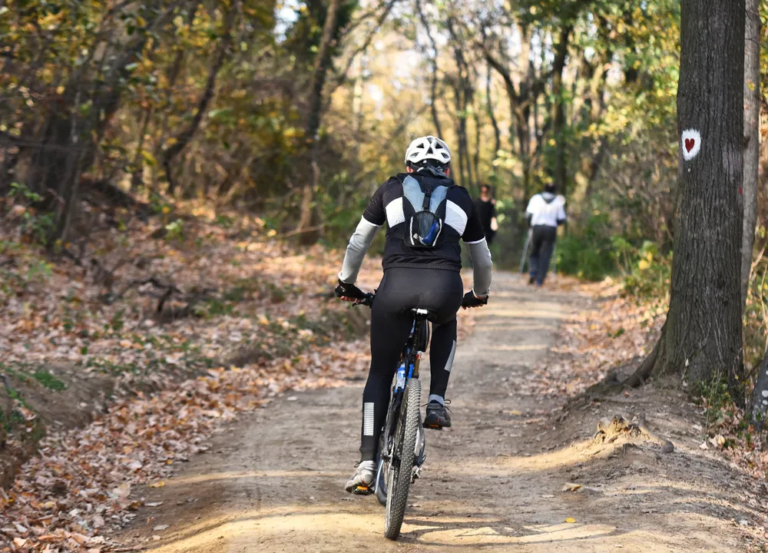Balancing Hydration Pack Weight: Essential Tips for Comfortable Biking

Key Point Summary of Balancing Hydration Pack Weight:
- Essential Principles of Weight Distribution: Exploring how balanced hydration pack weight contributes to comfortable biking.
- Selecting and Adjusting the Right Pack: Guidelines for choosing and fine-tuning hydration packs for optimal weight distribution.
- Strategic Packing for Balance and Comfort: Best practices for packing a hydration pack to maintain balance and enhance comfort during rides.
As an expert in the cycling field, with a broad background in various disciplines such as mountain, gravel, and cyclocross biking, I’ve gathered a wealth of knowledge about the critical role of equipment in enhancing performance and comfort. A crucial aspect often overlooked is the balancing of hydration pack weight. This article is dedicated to helping beginner and mid-level cyclists understand and master this vital skill.
Essential Principles of Weight Distribution
The Science Behind Balance: A well-distributed hydration pack weight is vital for maintaining a cyclist’s center of gravity. This balance is crucial for bike handling, especially on uneven terrain. An evenly balanced pack reduces strain on any one part of the body, helping prevent muscle fatigue and discomfort.
Expert Insight: Cycling professionals emphasize that the heaviest items should be packed closest to the back and centered between the shoulder blades. This placement helps maintain an upright riding posture and aids in bike stability.
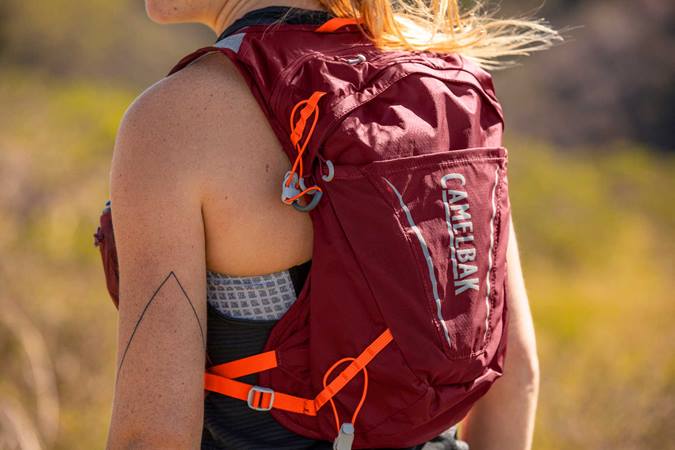
Here’s a list of hydration packs that are highly recommended for cyclists prioritizing balanced weight distribution:
1. Osprey Syncro and Sylva Series
- Features: These packs come with an AirSpeed™ back panel for ventilation and a LightWire frame, offering exceptional balance and comfort.
- Best For: Cyclists looking for a lightweight option with stable load management.
2. CamelBak M.U.L.E.
- Features: Known for its Crux reservoir for easier drinking and a well-organized compartment design for balanced weight distribution.
- Best For: Riders who want a classic design with a proven track record for balanced weight.
3. Deuter Race Air
- Features: Features a lightweight design with a compact, aerodynamic shape and Aircomfort back system for reduced back sweating.
- Best For: Road cyclists and cross-country riders who need a minimalistic yet balanced pack.
4. Evoc Stage
- Features: Offers a variety of volume options, with a focus on ergonomic weight distribution and a ventilated back panel.
- Best For: Riders who prioritize customizable fit and ergonomics.
5. Platypus Duthie A.M. 10.0
- Features: This pack includes a FloatAir back panel and a stable, low-profile design for balanced weight across rough terrain.
- Best For: Mountain bikers and adventure riders needing a balance of storage and hydration capacity.
6. Salomon ADV Skin 12 Set
- Features: A vest-style pack that provides a snug, secure fit with multiple hydration options and balanced weight distribution.
- Best For: Endurance riders and those who prefer a vest-style pack for balance and stability.
7. Hydrapak Expedition 8L
- Features: Designed for rugged conditions with an emphasis on balancing a larger water capacity with a comfortable fit.
- Best For: Long-distance cyclists and bikepackers needing high capacity and balanced load distribution.
Selecting and Adjusting the Right Pack
Choosing the Perfect Pack: The right hydration pack should be proportional to your body size and the length of your ride. Packs designed specifically for cycling often feature a more streamlined shape and targeted strap systems to secure the load close to your back.
Adjustment Tips: Properly adjusting your pack is as crucial as the pack itself. The straps should allow the pack to sit snugly against your back without restricting movement. Experts recommend adjusting the pack while in a cycling position, as the fit can feel different when standing.
Strategic Packing for Balance and Comfort
Packing Essentials: Prioritize what you need based on the ride’s duration and conditions. Common essentials include a repair kit, first-aid supplies, nutrition, and adequate water. Avoid the temptation to overpack, as excess weight can hinder your riding experience.
Balancing Techniques: Distribute weight evenly across the pack. Heavier items should be packed lower and closer to the spine for better weight distribution. This technique is particularly effective in maintaining balance during climbs and descents.
Hydration Placement: The water reservoir, usually the heaviest component, should be positioned flat against the back panel of the pack. Some packs come with features that stabilize the reservoir, which experts find useful in maintaining balance.
Additional Expert Advice
Regular Breaks and Adjustments: Experts suggest taking short breaks during long rides to adjust your pack. Even minor tweaks can significantly improve comfort.
Training with Your Pack: Preparing for a race or a long ride includes training with the pack you plan to use. This practice helps your body adapt to the additional weight and fit.
Maintenance is Key: Keep your hydration pack in top condition. Regularly inspect it for any signs of wear, especially on the straps and around the reservoir.
FAQ
How much should an empty backpacking pack weigh?
An empty backpacking pack typically weighs between 1 to 5 pounds (0.45 to 2.3 kg). Ultralight packs can be less than 2 pounds, while more durable or feature-rich models might weigh more. The ideal weight depends on the pack’s intended use and the individual’s carrying capacity.
How much does a hydration pack weigh?
The weight of an empty hydration pack typically ranges from about 1 to 3 pounds (0.45 to 1.36 kg), depending on its size, materials, and features. This weight does not include water or additional gear that may be carried in the pack.
What is a good base pack weight?
A good base pack weight for backpacking is generally considered to be around 10 to 20 pounds (4.5 to 9 kg). This includes the pack and essential gear but excludes consumables like food, water, and fuel. Ultralight backpackers often aim for a base weight under 10 pounds.
Final Thoughts
Balancing your hydration pack’s weight is a skill that enhances both comfort and performance in cycling. When choosing a hydration pack, consider how each model balances the weight, especially when fully loaded. With the right pack, proper adjustments, and strategic packing, you can transform your riding experience. It’s a blend of art and science – understanding the dynamics of weight distribution and applying them in a practical, rider-friendly manner.
Embrace these principles, and your rides will be more enjoyable and efficient.
John
